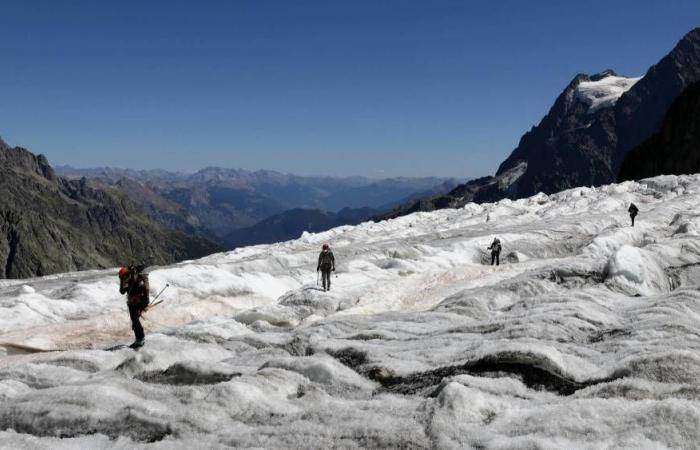In 2024, the Blanc des Ecrins glacier lost around 40 centimeters in thickness and retreated by 16 meters. The observation, saddening and clear, was drawn up by scientists who have been following the evolution of this emblematic glacier of the Alpine massif for 25 years.
In 2022 and 2023, the Blanc glacier had already suffered two years of record melting in quick succession. Glaciologists had recorded a loss of ice equivalent to 4.25m and 1.82 meters of water respectively. They also note that over the past 10 years, the melting of the glacier has become “systematic“. It is the same for the ice front, which is retreating in a very heterogeneous manner (due to its position embedded in a rocky gorge): -4 m in 2021, -30 m in 2022, -1.7 m in 2023 and -16 m in 2024.
Heavy accumulation of snow
This year, however, all the conditions were met for the ice mass to finally increase. The snowfall in 2024 is described as “exceptional” by glaciologists: the equivalent of 2.39 m of water accumulated on the glacier during the winter, making it the second record in 25 years passed, after 2001.
But even if the thickness of the snow cover made it possible to postpone the start of the melting period until the beginning of August, the glacier still suffered the effects of a hot summer. As well as the attacks of Saharan sand brought to our mountains by storms between February and June 2024.
By covering the snow with an ocher film, it increased the absorption of the sun's rays. And therefore the acceleration of the melting of snow and ice.
“In the absence of these layers of sand, the glacier would certainly have retained a snow cover until the beginning of autumn, which would have enabled it to benefit from a balance close to balance or even in surplus,” explains the Ecrins National Park in a press release.
The White Glacier, a reference for glaciologists
Scientists do not follow the evolution of all glaciers with the same precision, due to lack of time and sufficient resources to collect data on each massif. It is therefore impossible to know the exact melting figures for the other Ecrins glaciers.
But with 25 years of stored data, the Blanc glacier is a reference for monitoring climate change in the Southern Alps, especially since 2023.
That year it was chosen to replace the Sarenne glacier as the reference point for the Southern Alps. Sarenne had in fact been scientifically monitored since 1949, but it has now melted too much to continue monitoring.
“We are obliged to stop observations on the Sarenne glacier because the last remaining beacon is only 47 cm buried in the ice,” explained Mylène Bonnefoy, scientific engineer at the Institute of Environmental Geosciences, in 2023. “It will not last another year of measurements. “






